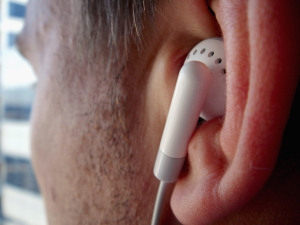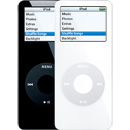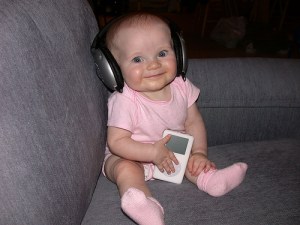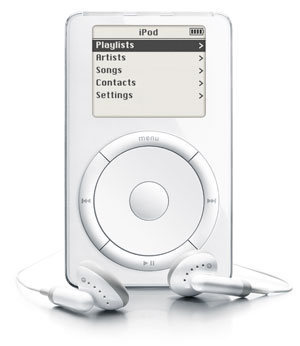Marques Brownlee does a really great job in his Youtube video explaining Beats by Dre and why they aren’t good headphones for a serious listener. They are an expensive fashion accessory. Check out the video.

Beats By Dre Explained
Cranked-Up Earbuds Next On Mayor Bloomberg’s Health Hit List
March 6, 2013 6:02 PM
 NEW YORK (CBSNewYork) — After launching campaigns against the Big Gulp, “big” salt and “big” junk food, Mayor Michael Bloomberg is embarking on a new target.
NEW YORK (CBSNewYork) — After launching campaigns against the Big Gulp, “big” salt and “big” junk food, Mayor Michael Bloomberg is embarking on a new target.
He wants to stop New Yorkers from going deaf, so he’s put in motion an attack on ear buds, CBS 2’s Marcia Kramer reported Wednesday.
Now hear this … there’s a new enemy of the nanny state: people who choose to listen to loud music on their favorite devices.
Bloomberg, who apparently has never met a health crusade he didn’t think worthy of embarking on, is launching a campaign to warn people about the risks of losing their hearing from blasting music on their headphones.
The initiative is aimed at the iPod generation, the people who were the first to put buds directly into their ears.
Officials say an iPod reaches 115 decibels at maximum volume. Doctors say sound has to be below 85 decibels to be safe.
One doctor told CBS 2’s Kramer the mayor’s initiative is a good one.
“There is a real threat for noise exposure ruining hearing. This will occur gradually over time. But what you’re looking at is a series of young people that may be experiencing hearing loss and the need for hearing aids at a much earlier age than any of their family members,” said Dr. Jayde Steckowych of New York Presbyterian Hospital/Columbia Presbyterian Center.
“I’m seeing a whole host of young teenagers who are coming in with early signs of noise-induced hearing loss,” audiologist Dr. Won Choe of ENT& Allergy told WCBS 880′s Wayne Cabot. “These kids are bombarded by media.”
Choe said earbuds like the ones that come with many Apple products seem to be most damaging.
“The thing is, it’s hard to measure how much these kids are getting. So you want to generally keep it down below, I’d say, 70 or 80 decibels,” Dr. Choe said. “The thing is, how do you measure that? Especially with these ear buds, they don’t have very good sound isolation so inevitably, they’re trying to drown out the background noise with increased volume.”
Choe, who is not involved with the city effort, said the more expensive noise-cancelling headphones are better for the user’s hearing and are recommended for those who are listening to personal music devices while commuting.
The audiologist said people standing nearby should not be able to hear what you are listening to in your headphones.
“That’s just incredible amounts of noise exposure,” Choe said.
Any effort to save young people’s hearing is important, said the doctor.
“I support it fully,” Choe said of the mayor’s proposal.
Experts say hearing loss increased 30 percent among teenagers and young adults between 1988 and 2006. But not everyone is thrilled about the mayor’s get-rid-of-the-ear-buds health initiative.
“I mean I appreciate being looked out for, but I also think you control the volume of these, so it’s up to personal responsibility for us to take care of our own ears,” said Beth Kirkpatrick of Harlem.
Kirkpatrick said her message to the mayor is simple: “Stay out of my ears,” she said.
“Mayor Bloomberg should ‘bud’ out,” another New Yorker said.
Some New Yorkers spoke with 1010 WINS about how they used their earbuds. Their comments seemed to indicate the problem may not be so rampant.
“I play them like not fully, like I put it all the way to the max and bring it down at least two times, that’s it. Just enough to hear the beat. I just like it,” Anthony Rivera said.
The mayor’s campaign is being financed through a grant from the fund for Public Health, the Department of Health’s fund raising arm.
iPod nano (1st generation) Replacement Program
Apple has determined that, in very rare cases, the battery in the iPod nano (1st generation) may overheat and pose a safety risk. Affected iPod nanos were sold between September 2005 and December 2006.
This issue has been traced to a single battery supplier that produced batteries with a manufacturing defect. While the possibility of an incident is rare, the likelihood increases as the battery ages.
Apple recommends that you stop using your iPod nano (1st gen) and follow the process noted below to order a replacement unit, free of charge.
Note: This battery issue is specific to the iPod nano (1st gen) and does not affect any other iPod.
Replacement Process
You may order a replacement unit via the web. Click here to begin.
Your iPod nano serial number will be checked to verify that it is eligible for this program. You will receive a replacement unit approximately 6 weeks after we receive your current iPod nano (1st gen).
If you have a personalized iPod nano, you will receive a non-personalized replacement. Make sure to use iTunes to back up any data on your current iPod nano before sending it in for a replacement unit.
Additional Information
Identifying an iPod nano (1st gen):

- It has a black or white plastic front and a silver metal back – later iPod nano models have a metal front and back. See images on this web page.
If you need assistance with placing an order, please visit an Apple Retail Store and bring your iPod nano with you for serial number validation.
Your replacement iPod is under warranty for 90 days from the date of service.
New Smartphone Or Headphones? Here Are A Few Tips To Prevent Hearing Loss
Found this article on http://techcrunch.com (http://techcrunch.com/2012/12/25/new-headphones-heres-a-few-tips-to-stop-hearing-loss/)
 GREGORY FERENSTEIN
GREGORY FERENSTEIN

This holiday season, many of us will be tearing the cellophane off of a hot new pair of headphones, a new smartphone, or music player. Before you decide to test the limits of OSHA’s volume regulations on your eardrums, we thought you’d want to know some helpful tips so you can keep on jamming for the rest of your life.
Keep It Below 50 percent Volume
Personal Music Players “should be set at the lowest possible volume at which music can be comfortably enjoyed. Setting the volume to 50-60% of maximal output is generally considered a safe listening level,” says Dr. Sharon Curhan, who has found that 1 in 5 teens now suffers from some type of hearing loss, up 5 percent since the 1980s.
Different styles can be listened to at elevated volumes for shorter periods of time.
“If using in-ear earphones and listening to Electronic, Heavy Metal, Hip Hop or Rock music, it is advisable to limit listening time to 3.5 hours or less when the volume is set at 60%. The louder the volume setting, the shorter the safe listening time may be (e.g. less than an hour if volume set at 70%, and ~30 minutes when set at 80%)…Folk, Pop, Classic Rock and other music that are characterized as medium-output musical styles, can safely be enjoyed for longer periods of time, yet it is still important to maintain the listening volume setting at 60% or lower. In most cases, an individual can safely listen to this type of music at a volume setting of 50% for any duration.”
Beware Of Volume Creep
Ever notice how you have to increase the volume to maintain the same music sensation you originally felt when you first started listening? “This is due to the contraction of tiny muscles in the ear that limit how much the tiny bones of the ear can move, thereby diminishing the transmission of sound vibrations to the inner ear where sounds are detected,” explains Curhan. “Exposure to loud music results in what is called a ‘temporary threshold shift’. The ear, in effect, becomes less sensitive to sound and the amount of time the ear needs to recover from a TSS varies.”
Give your ears time to rest. After rock-concert levels of eardrum-pounding volume, your ears could need more than a day to readjust. It’s important to watch that you’re not inadvertently increasing the volume. Your ears are trying to give you a signal that they’re being abused.
“More importantly, with more frequency in these episodes of exposure, the ‘temporary threshold shift’ can become a permanent threshold shift and a permanent hearing loss.”
Don’t Drown Out Noise
It’s tempting to drown out a screeching subway or crying baby with some Bieber-tastic tunes. While it may not sound like much to increase the volume to block out ambient noise, your ears feel the difference. “Often, the factor that leads to turning up the volume is not sensory adaptation, but more likely to be the presence of background or environmental noise,” warns Curhan. “By increasing the ‘signal to noise ratio,’ we are better able to hear the music (signal) over the other sounds around us (noise). That is why we often can listen to music at a lower volume in a quiet space than we can when riding the subway.”
The good doctor recommends a pair of earphones that block out the noise, either by fitting snugly into the ear or by electronically blocking ambient noise. If your shiny new pair of holiday headphones don’t have these features, it might be worth taking another trip to the electronics store.
[Image Credit: Flickr User TedsBlog]
Are iPods Behind Rising Teen Hearing Loss?
From Time Magazine:
That’s what the latest analysis of national health data on adolescents shows. Between 1988-94 and 2005-06, the percentage of teens with hearing loss jumped by about a third, from 15% of 12-to-19-year-olds to 19.5%. And the reason may not be the ubiquitous earphones that snake from nearly every teen’s ears during most hours of the day.
http://www.time.com/time/health/article/0,8599,2011503,00.html?xid=rss-topstories#ixzz0wzqNIolZ
Vuvuzela tops noise league, seen threat to hearing
JOHANNESBURG (Reuters) – South Africa’s vuvuzela, the trumpet that will be a fixture at World Cup matches, is the loudest of all fan instruments and can cause permanent hearing loss, a global hearing foundation said on Monday.
Soccer governing body FIFA has okayed the plastic trumpet for the tournament, which starts on Friday, after organisers did tests at a match at Johannesburg’s 95,000-seater Soccer City due to worries the din could drown out emergency announcements.
While normally reserved for local games, the vuvuzela can now also be heard at warm-up matches and practice sessions ahead of the tournament, even those not involving South Africa’s Bafana Bafana.
The Hear the World Foundation — an initiative formed by Swiss hearing products group Phonak to raise awareness about hearing loss — said tests showed it produced a dangerously loud sound, far out-blasting a chainsaw.
The tests, conducted late last month in a sound-proof studio, found the vuvuzela emitted 127 decibels, more than the air horn — 123.5 decibels — and the Brazil’s samba drums.
A referee’s whistle was fourth while the cowbell, a favourite in Switzerland and Austria, trailed at 114.9 decibels.
“To put it in perspective, when a sound is increased by ten decibels our ears perceive it as being twice as loud, so we would consider the vuvuzela to be more than double the volume of the cowbell,” audiologist Robert Beiny said in a statement.
Hear the World said extended exposure to 85 decibels risked permanent hearing loss and urged fans to use protection, such as ear plugs and ear muffs.
The vuvuzela can be heard across South Africa as football fever grows ahead of the June 11-July 11 tournament, from airports to shopping centres, but at stadiums tens of thousands of people will blow the trumpet, such like constant car hooters in a traffic jam.
Some foreign players complained at last year’s Confederation Cup about the din, and Thailand manager Bryan Robson that he was unable to communicate with his players during a friendly against South Africa.
FIFA President Sepp Blatter has defended it, though, saying it has as much a part of local football as bongo drums and chanting in other countries.
South Africa coach Carlos Alberto Parriera wants even more noise to help inspire the world’s lowly 83rd-ranked Bafana Bafana through its tough Group A matches against Mexico (June 11), and former champions Uruguay (June 16) and France (June 22).
The study found that it was not only trumpets, drums and horns that can hurt your ears, two excited supporters cheering a goal on either side of you can produce 121.6 decibels, also drowning out a chainsaw at just 100 decibels.
(Reporting by Gordon Bell, Editing by Nigel Hunt)
My Day With The iPad
 After finally playing with the iPad for the day I got a few first impressions. It’s cool, even though I’d sooner have a laptop (but aside from personal preference,) it’s a new way to consume media that impacts to how many iPad users use headphones. Specifically more reasons to use headphones to watch TV, movies or listen to music means longer exposure to the hazards of headphones and the danger of prolonged exposure to loud sounds.
After finally playing with the iPad for the day I got a few first impressions. It’s cool, even though I’d sooner have a laptop (but aside from personal preference,) it’s a new way to consume media that impacts to how many iPad users use headphones. Specifically more reasons to use headphones to watch TV, movies or listen to music means longer exposure to the hazards of headphones and the danger of prolonged exposure to loud sounds.
Where the iTouch and iPhone headphones are designed to be convenient to carry with you the iPad’s space savings and increased price makes bigger, more comfortable headphones an attractive accessory. Which means many iPad users could be using more efficient (louder) headphones for longer periods of time increasing the risk of developing Noise Induced Hearing Loss.
Hearing Loss Caused by Golf!?!
 Golfers have a new threat out on the course. Players using the current generation of thin-faced titanium drivers should consider wearing ear plugs, experts advise.
Golfers have a new threat out on the course. Players using the current generation of thin-faced titanium drivers should consider wearing ear plugs, experts advise.
A recent case in the British Medical Journal revealed that ear specialists suspect the “sonic boom” the metal club head makes when it strikes the ball damaged the hearing of a 55-year-old golfer they treated.
The golfer had been playing with a King Cobra LD titanium club three times a week for 18 months and commented that the noise of the club hitting the ball was “like a gun going off”.
Physicians at the Norfolk and Norwich University Hospital carried out tests on the golfer after he attended their clinic with unexplained tinnitus and reduced hearing in his right ear.
The tests confirmed that his hearing problems were typical of those seen with exposure to loud noises.
The Physicians decided to recruit a professional golfer to hit shots with six thin-faced titanium clubs from manufacturers such as King Cobra, Callaway, Nike and Mizuno.
All produced a louder noise than standard thicker stainless steel drivers.
The worst offender was the Ping G10 at over 130 decibels.
The Physicians said wearing earplugs would solve the problem, but said players use the noise as feedback to assess how they are playing and how well their equipment is performing. “So it might not work for all.”
If There Was No Demand There Would Be No Supply
I don’t endorse this product (or believe it works) but it points to a rise in demand for relief for a condition caused by Noise Induced Hearing Loss. I keep hearing them run commercials on Sirius satellite radio so I checked out their web page. It doesn’t offer much info about their “unique homeopathic formula using proven and effective ingredients to provide you with a safe and natural alternative to prescription medications.”
With the numbers of cases of tinnitus skyrocketing each year there will likely be more products offering little help to a growing problem in the future. Unfortunately the best solution for the problem is prevention.





